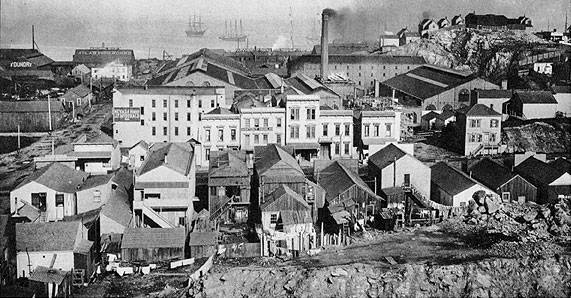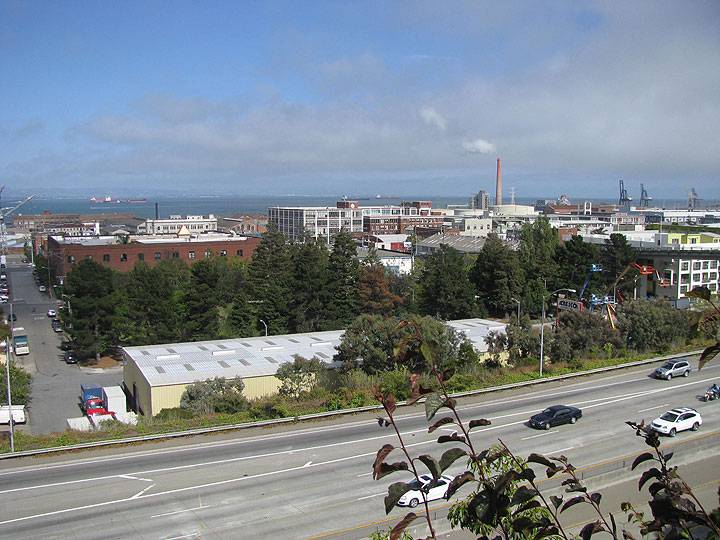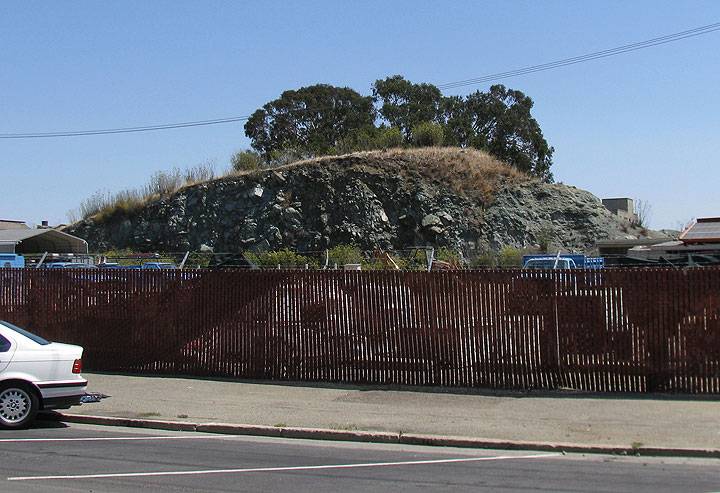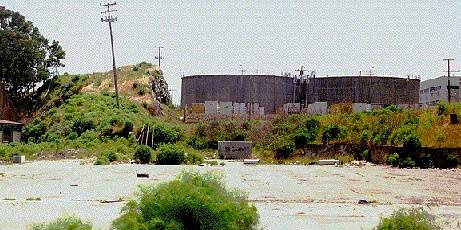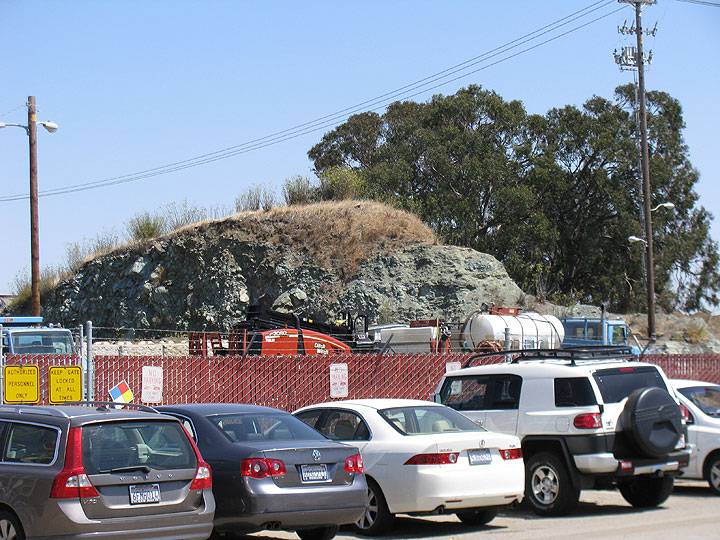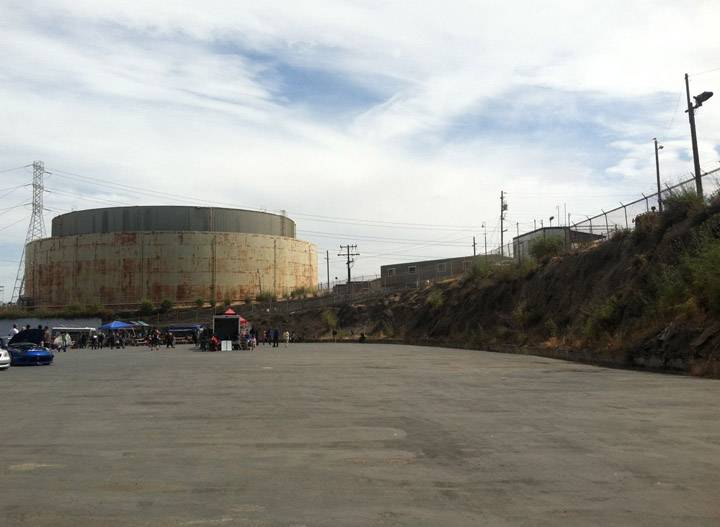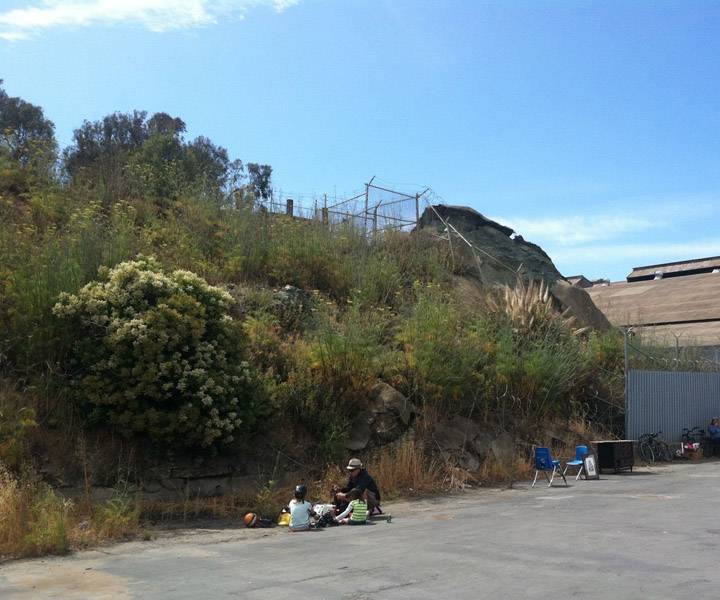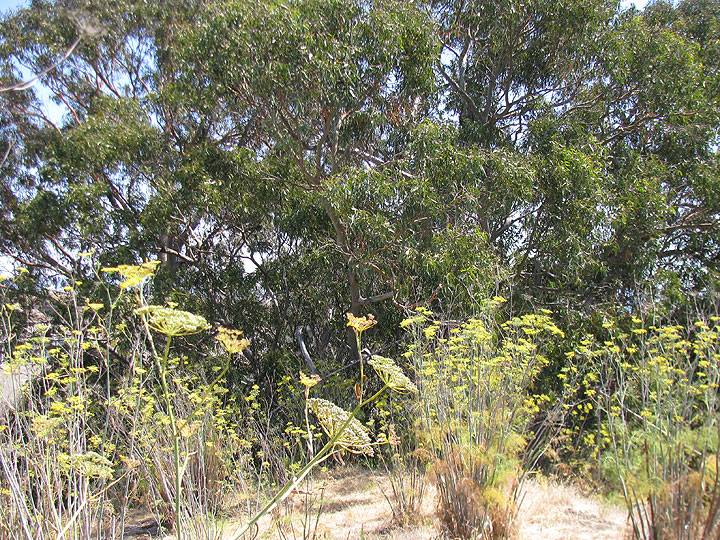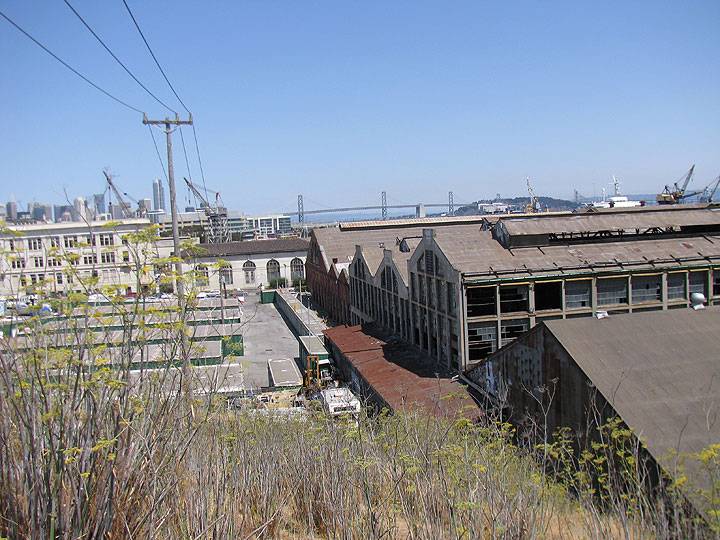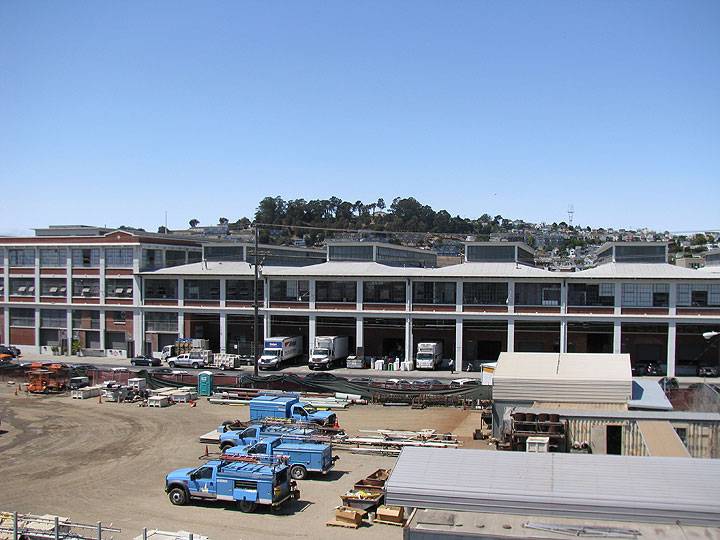Irish Hill then and now: Difference between revisions
No edit summary |
mNo edit summary |
||
| (3 intermediate revisions by 2 users not shown) | |||
| Line 3: | Line 3: | ||
''by Christopher VerPlanck'' | ''by Christopher VerPlanck'' | ||
''Note: This is an excerpt from a slightly revised version of a document prepared in support of the application by the Dogpatch neighbors to receive historical district status.'' | ''Note: This is an excerpt from a [[The Story of Dogpatch|slightly revised version]] of a document prepared in support of the application by the Dogpatch neighbors to receive historical district status.'' | ||
[[Image:Irish-hill-1890s.jpg]] | [[Image:Irish-hill-1890s.jpg]] | ||
| Line 15: | Line 15: | ||
'''Same 1890 image in a fuller panorama''' | '''Same 1890 image in a fuller panorama''' | ||
''Photo: courtesy San Francisco Maritime Museum'' | ''Photo on right: courtesy San Francisco Maritime Museum'' | ||
Irish Hill is not located within the Dogpatch survey boundaries but it is worth discussing as the first residential enclave to develop adjacent to the budding industrial district of Potrero Point. Irish Hill was located in an area bounded by Illinois Street to the west, Pacific Rolling Mills/Union Iron Works to the north, San Francisco Bay to the east and San Francisco Gas & Electric Company to the south. It consisted of two separate areas: a district of approximately sixty shacks and cottages huddled on the crest of an outcropping of serpentine south of the shipyard and a compact district of approximately forty lodging houses on the flats surrounding the intersection of Illinois and 20th Streets. Irish Hill was a solidly working-class district inhabited mostly by single Irish male immigrants. In 1946 Billy Carr, a sheriff’s deputy in South San Francisco who had been raised in Irish Hill, described the scene: | Irish Hill is not located within the Dogpatch survey boundaries but it is worth discussing as the first residential enclave to develop adjacent to the budding industrial district of Potrero Point. Irish Hill was located in an area bounded by Illinois Street to the west, Pacific Rolling Mills/Union Iron Works to the north, San Francisco Bay to the east and San Francisco Gas & Electric Company to the south. It consisted of two separate areas: a district of approximately sixty shacks and cottages huddled on the crest of an outcropping of serpentine south of the shipyard and a compact district of approximately forty lodging houses on the flats surrounding the intersection of Illinois and 20th Streets. Irish Hill was a solidly working-class district inhabited mostly by single Irish male immigrants. In 1946 Billy Carr, a sheriff’s deputy in South San Francisco who had been raised in Irish Hill, described the scene: | ||
| Line 23: | Line 23: | ||
<blockquote>''In them days we never went to Morosco’s (a vaudeville house on Mission Street)…the shows were much better on Irish Hill, where the boys from one hotel would challenge the boys from another hotel and fight all Saturday afternoon in a hayrope ring outside Gately’s Hotel. Then we’d all go in and knock off steam beers for a nickel a piece…''</blockquote> | <blockquote>''In them days we never went to Morosco’s (a vaudeville house on Mission Street)…the shows were much better on Irish Hill, where the boys from one hotel would challenge the boys from another hotel and fight all Saturday afternoon in a hayrope ring outside Gately’s Hotel. Then we’d all go in and knock off steam beers for a nickel a piece…''</blockquote> | ||
<blockquote>''You went up on Irish Hill when you got off work and you never left it until morning. Below it was Dutchman’s Flat (Dogpatch) where Dutchmen from the old country lived. The next hill, that’s Russian Hill now (Potrero Hill), was Scotch Hill, where the Scotchmen lived. The Irish came from Ireland, with a | <blockquote>''You went up on Irish Hill when you got off work and you never left it until morning. Below it was Dutchman’s Flat (Dogpatch) where Dutchmen from the old country lived. The next hill, that’s Russian Hill now (Potrero Hill), was Scotch Hill, where the Scotchmen lived. The Irish came from Ireland, with a shillelagh stick and a bag on their shoulder, and a card telling them to go to work for the Pacific Rolling Mill. If there was no work there, they’d go to the gas house (San Francisco Gas Light Company). The Dutchmen came with work cards telling them to go to the sugar house (Western Sugar Refinery). The Scotchmen, all mechanical men, would go to work at the Scott Union Iron Works.''</blockquote> | ||
<blockquote>''In them days, there was never a street paved. You went through the mud to school. If you wanted to go to Butchertown you walked a plank from Twenty-third Street to Arthur Avenue…But the war (First World War) came along, and the Government drove us off Irish Hill. Eight or nine hundred people used to live there. [from Robert O’Brien, “Riptides,” Scrapbook, Oral History of San Francisco, Bancroft Library, p. 14.]''</blockquote> | <blockquote>''In them days, there was never a street paved. You went through the mud to school. If you wanted to go to Butchertown you walked a plank from Twenty-third Street to Arthur Avenue…But the war (First World War) came along, and the Government drove us off Irish Hill. Eight or nine hundred people used to live there. [from Robert O’Brien, “Riptides,” Scrapbook, Oral History of San Francisco, Bancroft Library, p. 14.]''</blockquote> | ||
| Line 50: | Line 50: | ||
''Photo: Chris Carlsson'' | ''Photo: Chris Carlsson'' | ||
[[Image:Irish hill on R PGE tank on L, pier 70.jpg]] | |||
'''2014 view of the foot of Irish Hill during a rare activation of this space as a community market organized by the developers of Pier 70. PG&E tanks on left.''' | |||
''Photo: LisaRuth Elliott'' | |||
[[Image:Irish hill remnant at pier 70.jpg]] | |||
'''Irish hill remnant from Pier 70, in 2014.''' | |||
''Photo: LisaRuth Elliott'' | |||
[[Image:Dogpatch-fennel-and-eucalyptus-on-top-of-Irish-Hill 9853.jpg]] | [[Image:Dogpatch-fennel-and-eucalyptus-on-top-of-Irish-Hill 9853.jpg]] | ||
Latest revision as of 13:41, 4 May 2015
Historical Essay
by Christopher VerPlanck
Note: This is an excerpt from a slightly revised version of a document prepared in support of the application by the Dogpatch neighbors to receive historical district status.
Irish Hill c. 1890
Photo: courtesy San Francisco Maritime Museum
Same 1890 image in a fuller panorama
Photo on right: courtesy San Francisco Maritime Museum
Irish Hill is not located within the Dogpatch survey boundaries but it is worth discussing as the first residential enclave to develop adjacent to the budding industrial district of Potrero Point. Irish Hill was located in an area bounded by Illinois Street to the west, Pacific Rolling Mills/Union Iron Works to the north, San Francisco Bay to the east and San Francisco Gas & Electric Company to the south. It consisted of two separate areas: a district of approximately sixty shacks and cottages huddled on the crest of an outcropping of serpentine south of the shipyard and a compact district of approximately forty lodging houses on the flats surrounding the intersection of Illinois and 20th Streets. Irish Hill was a solidly working-class district inhabited mostly by single Irish male immigrants. In 1946 Billy Carr, a sheriff’s deputy in South San Francisco who had been raised in Irish Hill, described the scene:
In the early [eighteeen]-eighties it was mostly all hotels on Irish Hill. The Green House, run by Mike Farrell. The White House, run by Hans Rasmussen. Cash’s Hotel run by Jimmy Cole. The San Quentin House, run by Jim Gately. Gately took in the parolees from San Quentin and got them jobs in the rolling mills at the foot of the hill. There was Paddy Kearns’ Hotel, and outside the gas house was Mike Boyle’s steam beer dump…
In them days we never went to Morosco’s (a vaudeville house on Mission Street)…the shows were much better on Irish Hill, where the boys from one hotel would challenge the boys from another hotel and fight all Saturday afternoon in a hayrope ring outside Gately’s Hotel. Then we’d all go in and knock off steam beers for a nickel a piece…
You went up on Irish Hill when you got off work and you never left it until morning. Below it was Dutchman’s Flat (Dogpatch) where Dutchmen from the old country lived. The next hill, that’s Russian Hill now (Potrero Hill), was Scotch Hill, where the Scotchmen lived. The Irish came from Ireland, with a shillelagh stick and a bag on their shoulder, and a card telling them to go to work for the Pacific Rolling Mill. If there was no work there, they’d go to the gas house (San Francisco Gas Light Company). The Dutchmen came with work cards telling them to go to the sugar house (Western Sugar Refinery). The Scotchmen, all mechanical men, would go to work at the Scott Union Iron Works.
In them days, there was never a street paved. You went through the mud to school. If you wanted to go to Butchertown you walked a plank from Twenty-third Street to Arthur Avenue…But the war (First World War) came along, and the Government drove us off Irish Hill. Eight or nine hundred people used to live there. [from Robert O’Brien, “Riptides,” Scrapbook, Oral History of San Francisco, Bancroft Library, p. 14.]
2008 view from 19th St. and Pennsylvania of shipyards and Hwy 280 where Irish Hill used to be. . .
Photo: Chris Carlsson
Demolished by Bethlehem Steel during the First World War to make way for shipyard expansion, this is what's left of Irish Hill today, near 20th and Illinois, a remnant of its former self in the midst of an industrial area.
Photo: Chris Carlsson
1995 view from 20th due south at Irish Hill.
Photo: Chris Carlsson
2012 view of the stump of Irish Hill from corner of 22nd and Illinois.
Photo: Chris Carlsson
2014 view of the foot of Irish Hill during a rare activation of this space as a community market organized by the developers of Pier 70. PG&E tanks on left.
Photo: LisaRuth Elliott
Irish hill remnant from Pier 70, in 2014.
Photo: LisaRuth Elliott
An unexpected and "unnatural" island of invasive species, fennel and eucalyptus, clusters at the top of the remains of Irish Hill in 2012.
Photo: Chris Carlsson
View north in 2012 from Irish Hill stump.
Photo: Chris Carlsson
View westward from top of Irish Hill stump in 2012. Hard to believe that this hill once connected to that hill in the distance above the roof and beyond the I-280 freeway that passes between them now.
Photo: Chris Carlsson

